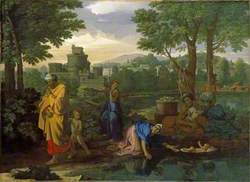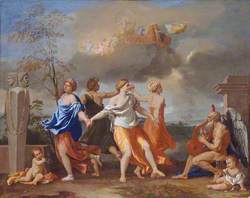How you can use this image
This image can be used for non-commercial research or private study purposes, and other UK exceptions to copyright permitted to users based in the United Kingdom under the Copyright, Designs and Patents Act 1988, as amended and revised. Any other type of use will need to be cleared with the rights holder(s).
Review the copyright credit lines that are located underneath the image, as these indicate who manages the copyright (©) within the artwork, and the photographic rights within the image.
The collection that owns the artwork may have more information on their own website about permitted uses and image licensing options.
Review our guidance pages which explain how you can reuse images, how to credit an image and how to find images in the public domain or with a Creative Commons licence available.
Buy a print or image licence
You can purchase this reproduction
If you have any products in your basket we recommend that you complete your purchase from Art UK before you leave our site to avoid losing your purchases.
Notes
Add or edit a note on this artwork that only you can see. You can find notes again by going to the ‘Notes’ section of your account.
The infant Bacchus, god of wine, drinks from a bowl into which a satyr squeezes grape juice representing wine. Paintings commonly show Bacchus as a drunken adult, but to show him drinking alcohol at this young age is unusual. Ovid’s Metamorphoses describes how Bacchus' aunt Ino watches over him. She is probably the seated woman in blue; her husband, Athamas, is the man holding Bacchus. The two embracing infants are their sons. The story has a tragic outcome when the jealous goddess Juno sends Ino and Athamus insane and Athamus kills one of their sons. Poussin may be alluding to this sad story through the dark clouds in the background and the goat, since goats who had eaten grapes were sacrificed. The muscular poses in this painting show Poussin’s study of classical sculpture.
Title
The Nurture of Bacchus
Date
about 1628
Medium
Oil on canvas
Measurements
H 80.9 x W 97.7 cm
Accession number
NG39
Acquisition method
Bequeathed by G.J. Cholmondeley, 1831; entered the Collection, 1836
Work type
Painting








